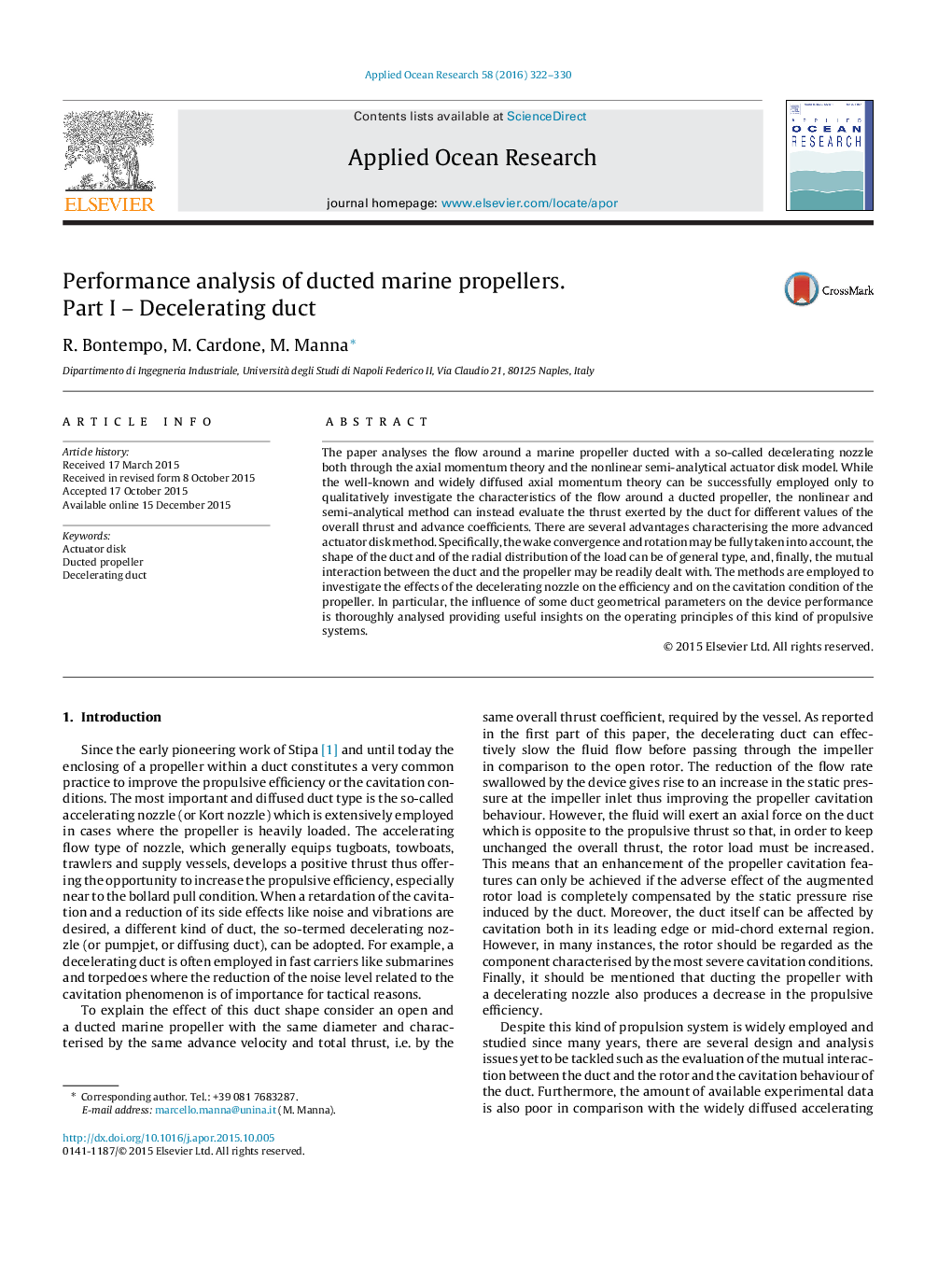| Article ID | Journal | Published Year | Pages | File Type |
|---|---|---|---|---|
| 1719755 | Applied Ocean Research | 2016 | 9 Pages |
•The axial momentum theory is applied to propellers equipped with a decelerating duct.•The most important limitations of the axial momentum theory are highlighted.•A nonlinear actuator disk method is applied to propellers with a decelerating duct.•Duct geometry effect on the efficiency and on the cavitation behaviour is analysed.•Some insights on the duct cavitation occurrence are provided.
The paper analyses the flow around a marine propeller ducted with a so-called decelerating nozzle both through the axial momentum theory and the nonlinear semi-analytical actuator disk model. While the well-known and widely diffused axial momentum theory can be successfully employed only to qualitatively investigate the characteristics of the flow around a ducted propeller, the nonlinear and semi-analytical method can instead evaluate the thrust exerted by the duct for different values of the overall thrust and advance coefficients. There are several advantages characterising the more advanced actuator disk method. Specifically, the wake convergence and rotation may be fully taken into account, the shape of the duct and of the radial distribution of the load can be of general type, and, finally, the mutual interaction between the duct and the propeller may be readily dealt with. The methods are employed to investigate the effects of the decelerating nozzle on the efficiency and on the cavitation condition of the propeller. In particular, the influence of some duct geometrical parameters on the device performance is thoroughly analysed providing useful insights on the operating principles of this kind of propulsive systems.
